Rare is the sequel that gets to be a direct follow-up to a brand new game that introduced so many unique concepts. 2019’s Death Stranding was a fairly divisive game that got criticized for being a glorified walking simulator that also threw a lot of friction at its players, forcing them to meet it on its own terms. Now that we’ve all had time to digest and process the oddities and charms of Hideo Kojima’s 2019 game, however, in comes Death Stranding 2. A sequel that’s much more confident, and improves upon nearly every aspect of the original.
Right away, Death Stranding 2 wastes no time in getting things going. It assumes you already know the basics. BTs, BBs, DOOMS, the works. There’s a helpful recap available in the main menu, but do be warned that it’s rather brief and only goes over the bones of the first game’s plot.
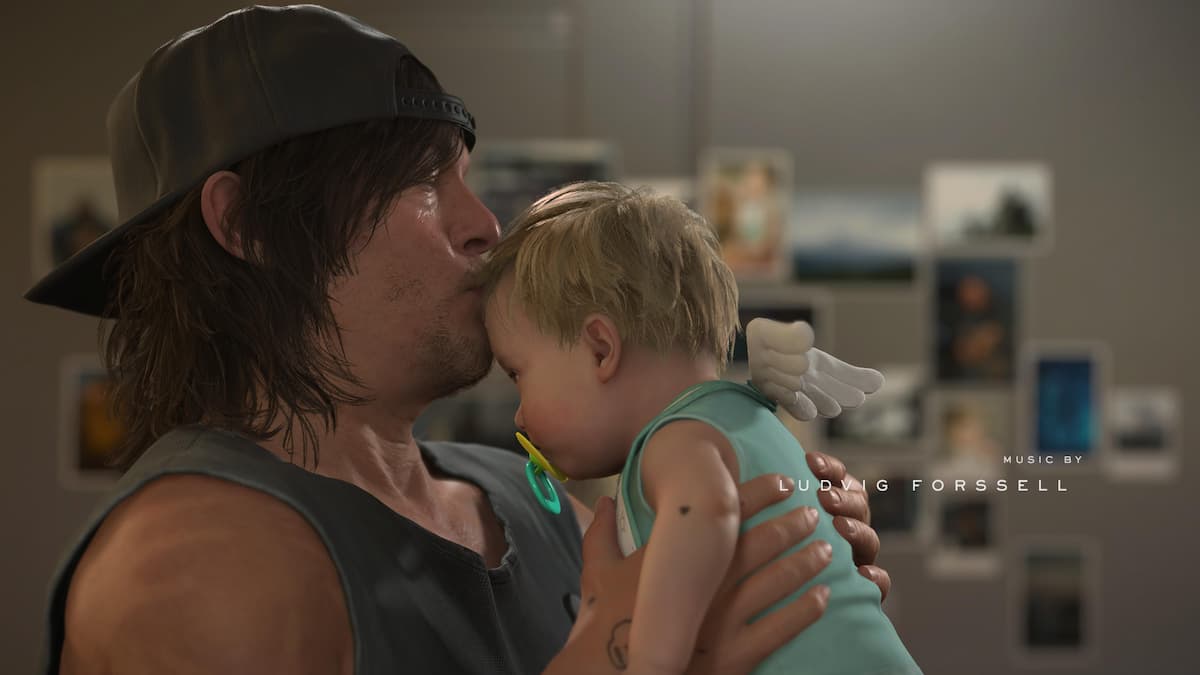
Death Stranding 2 takes place about a year after the events of the first game. Lou is a little older now, she’s much more reactive and responsive to Sam, and just cute as a button. They’re also both hiding from Bridges, as Sam technically made off with Bridges property and is now forced to live on the border of Mexico. Things aren’t all bad, though. Sam’s shelter is a cozy little abode filled with cute toys for Lou, including a cryptobiote plushie and a koala cot. There are photos on the wall of the pair journeying together, and in these little details, we see how much their bond has strengthened since we last saw them.
It doesn’t take long for things to get complicated. Fragile (played by Lea Seydoux) shows up and we learn that she’s now the leader of a new independent outfit called Drawbridge. She asks Sam for his help to bring Mexico into the chiral network, and in return, this will help erase Sam and Lou’s information from Bridges’ records, allowing them to live freely. That all sounds fine and dandy, and it doesn’t take long for Sam to link up Mexico at all. Except, once the mission ends, big things happen that kickstart the rest of the story.
It’s actually impossible for me to review Death Stranding 2 without spoiling what happens at the end of the prologue. Rest assured that this is a thing that happens very early on in the game. Still, here’s your fair warning.
Sam the Trauma Man
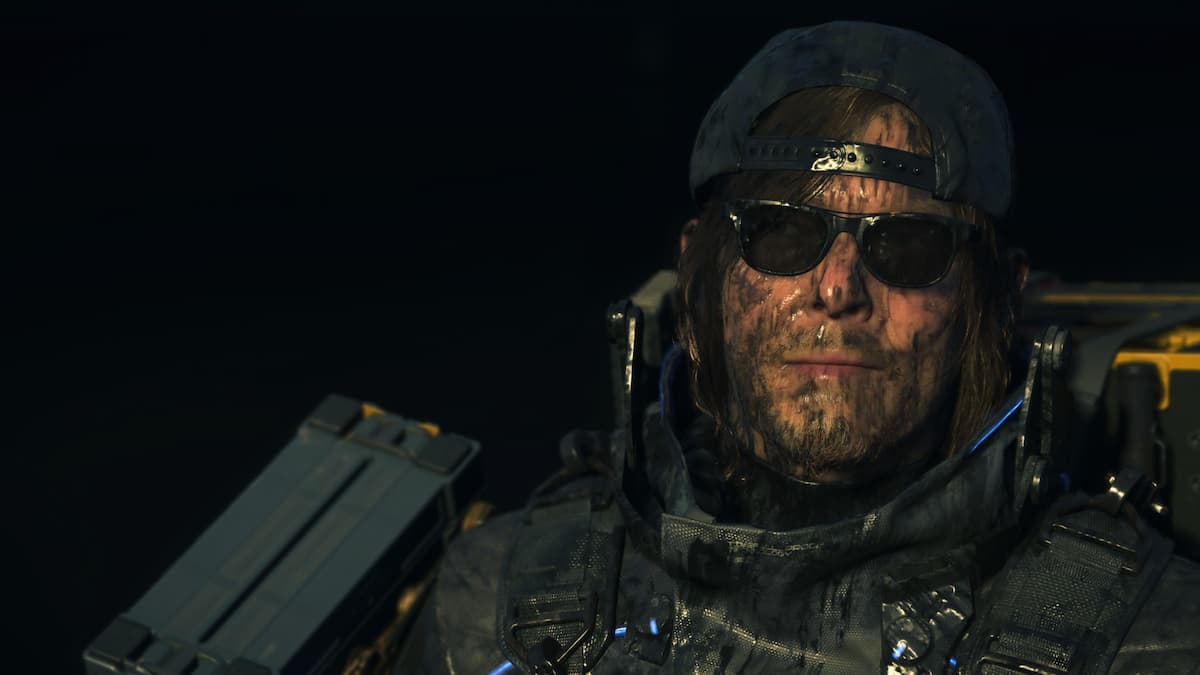
Ready for the spoiler? Alright, here we go.
As Sam returns to his shelter after the Mexico mission, he finds that it’s been attacked by a mysterious group. Fragile, who was looking after Lou, is left on the ground, shot and injured. Lou, however, wasn’t so lucky. Despite Fragile’s attempts to jump Lou away from the scene, she was shot and has presumably died.
This grief is what pushes Sam forward for the rest of the game. And I gotta say, poor Sam. After processing and dealing with the off-screen death of his partner in the first game, now he’s forced to deal with his grief over losing his adopted toddler daughter. It’s rough and I genuinely felt for him, thanks in no small part to Norman Reedus’ performance. Subdued though it may be, Reedus brings a quiet, sorrowful energy to Sam that persists all throughout Death Stranding 2. That quietness is punctuated by rare moments of heartbreaking outcries and breakdowns, which feel all the more powerful.
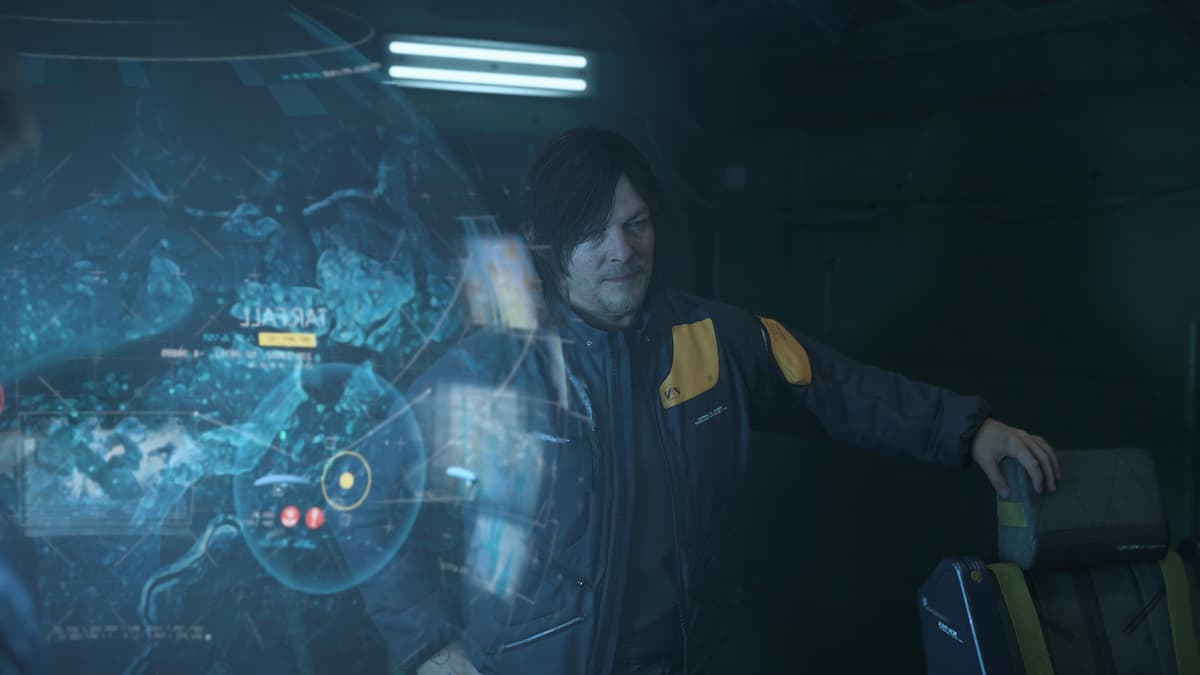
He’s not allowed to grieve for too long, though, as Fragile approaches him with yet another mission. This time, Sam’s task is to bring Australia into the chiral network. Drawbridge has been contracted to do this by a private company called APAS and Sam agrees because… Well, truth be told, I really don’t know why Sam agrees.
Fragile says that going on a journey across Australia would be a good way for Sam to process his grief over Lou’s death because… I don’t know why exactly. I think it’s got to do with the fact that Sam and Lou traveled across North America together, so traveling across Australia alone would somehow help him accept her death? It doesn’t help that Sam himself also appears skeptical of APAS, questioning their intentions and wondering if he’s not just being some sort of weird colonizer on their behalf. But then he agrees because the game must go on, and somehow doing this for a private organization feels better than doing it for the government. Or something. Don’t think too hard about it.
Where the Story Falls Apart…
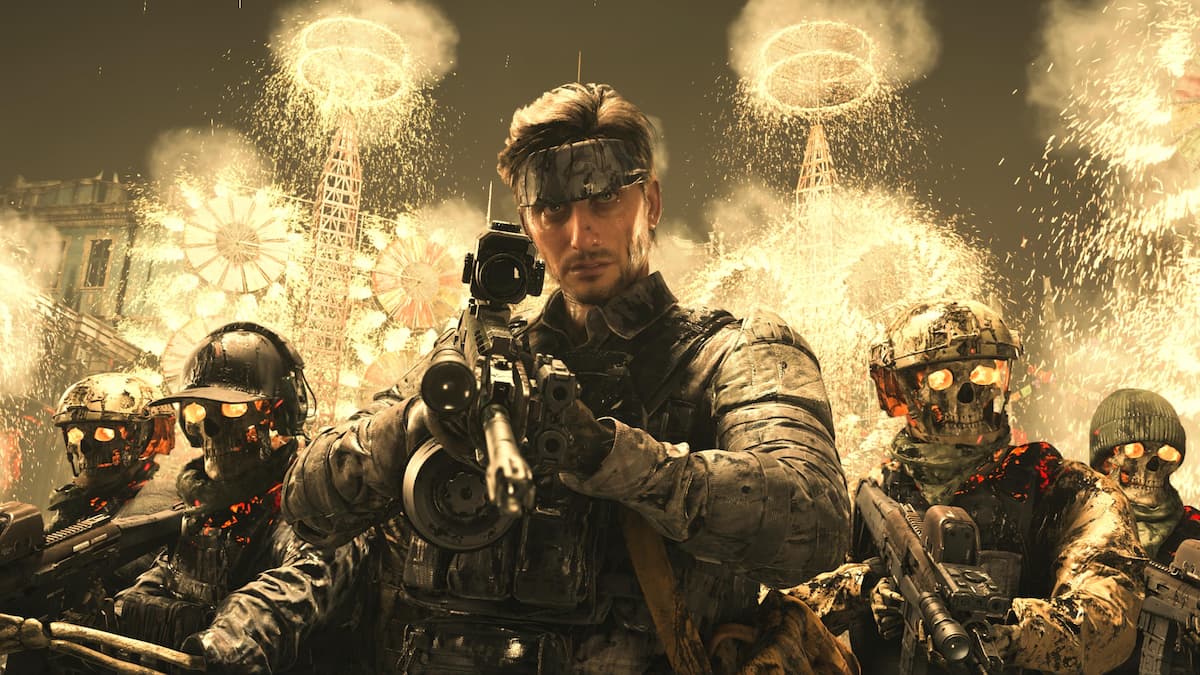
In all honesty, Death Stranding 2‘s story and writing aren’t great. Sam’s motivations are flimsy at best, and everything begins to fall apart in its final act. In particular, newcomer Neil Vana (played by Luca Marinelli) serves as the Cliff Unger (played by Mads Mikkelsen in Death Stranding) stand-in here, and his purpose is to dole out answers to the game’s mysteries bit by bit via spotty flashbacks, dialogue, and strange items.
Marinelli does a great job with the character, making him look imposing yet so terribly sad at the same time, and he gets off to a strong start. Kojima masterfully hands out clues and answers at the right time, keeping players hooked and trying to guess what Neil’s role in this story is. The payoff, however, is where it falls short. Not because the story doesn’t make sense, but because it’s so incredibly stupid.
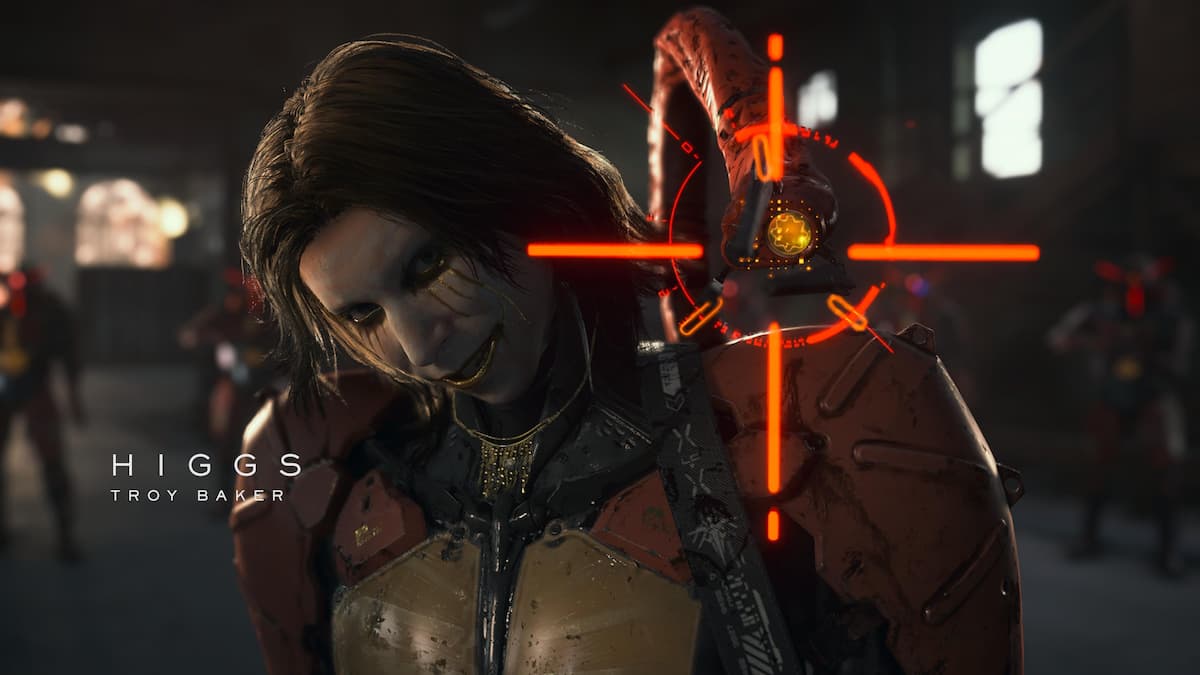
It doesn’t help that Death Stranding 2 has opted to make returning villain Higgs the main bad guy yet again. Now I’ll admit to a bit of personal bias here as I already wasn’t a fan of Higgs in the first game, and if you’re like me and you didn’t like him either, he’s even more insufferable in this one. For reasons that get revealed over the course of the game, Higgs somehow makes it back from his exile at the Beach to torment Sam once again. This time, he’s got clown makeup on his face, an electric guitar, and a giant mech with tentacles.
Troy Baker does an admirable job bringing Higgs to life yet again, and there are brief moments where Higgs does shine as a colorful foil to Sam’s stoic nature. Yet I would’ve preferred if Higgs were more of a secondary antagonist, and that the spotlight could’ve been given to Neil instead.
I’d been enjoying the Death Stranding 2 journey and Sam’s interactions with his new crew up until this point, and the final act revelations — despite being wrapped up in truly graphically impressive set-pieces that could set my PS5 on fire — left me feeling like I was leaving the game on a sour note.
… It Makes Up For With Feelings
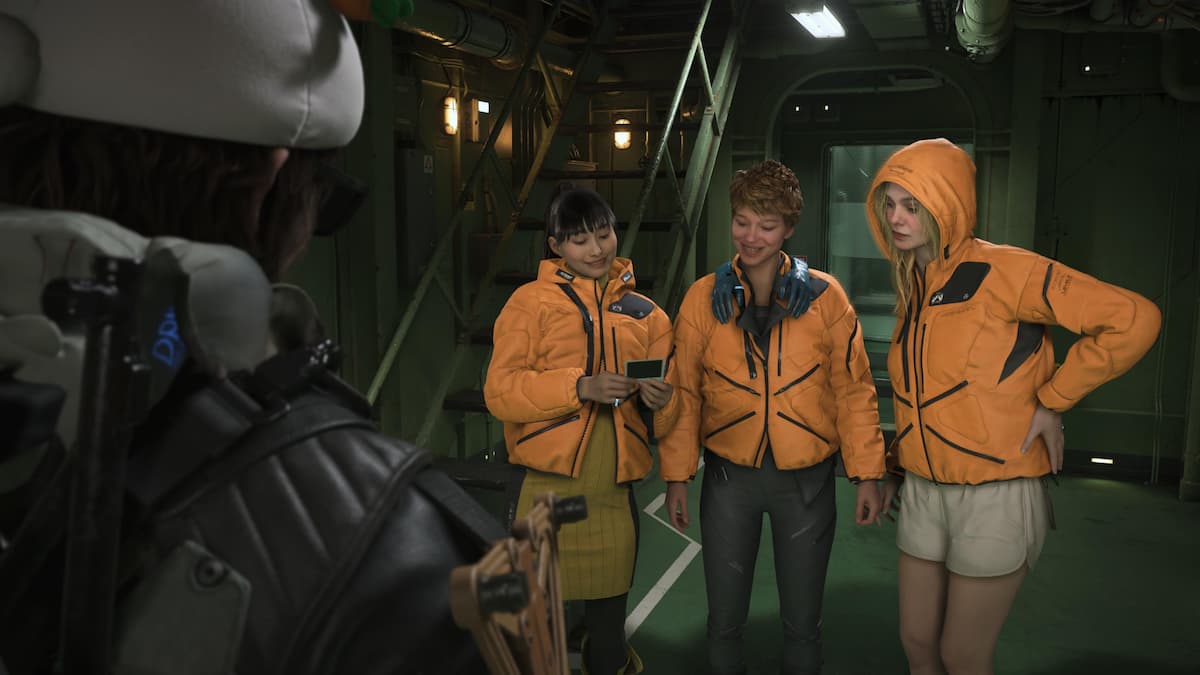
It’s a good thing, then, that the rest of the journey is so good. Whereas Death Stranding frontloaded all of its exposition and character introductions in the first couple hours, Death Stranding 2 is more restrained in that regard.
When Fragile comes to Sam with the Australia job, we’re introduced to her ship, the DHV Magellan. DHV stands for Deep-tar Hunting Vessel, and as the name suggests, the ship travels through the tar currents of the world, emerging from the ground in an inky black substance, complete with a jaunty tune to announce its arrival. Leading the crew is the captain himself, Tarman (depicted by George Miller), and we’re also introduced to Dollman (Faith Akin), who’s literally a stop-motion little doll that hangs on Sam’s belt when he goes out exploring.
As you progress further, you’re eventually introduced to even more characters, including Heartman (Nicolas Winding Refn) who returns from the first game, and newcomers Rainy (Shioli Kutsuna) and Tomorrow (Elle Fanning). Because of this, Death Stranding 2 feels more like a fun expedition across Australia, especially as you’re treated to lengthy cutscenes that delve deeper into each character’s backstory.
Rainy, in particular, is a standout addition to the crew thanks to her sunny disposition and the way she plays off against the more mature Fragile and the shy Tomorrow. Each time Sam returns to the DHV Magellan, you might witness small interactions between the crew members, like Tomorrow trying to better control her tar powers, or Rainy teaching her new games and helping with her growth and education. Dollman deserves a shoutout too, as he helps Sam make sense of what’s going on in the story so far, and always does so with wisdom and a bit of cheekiness.
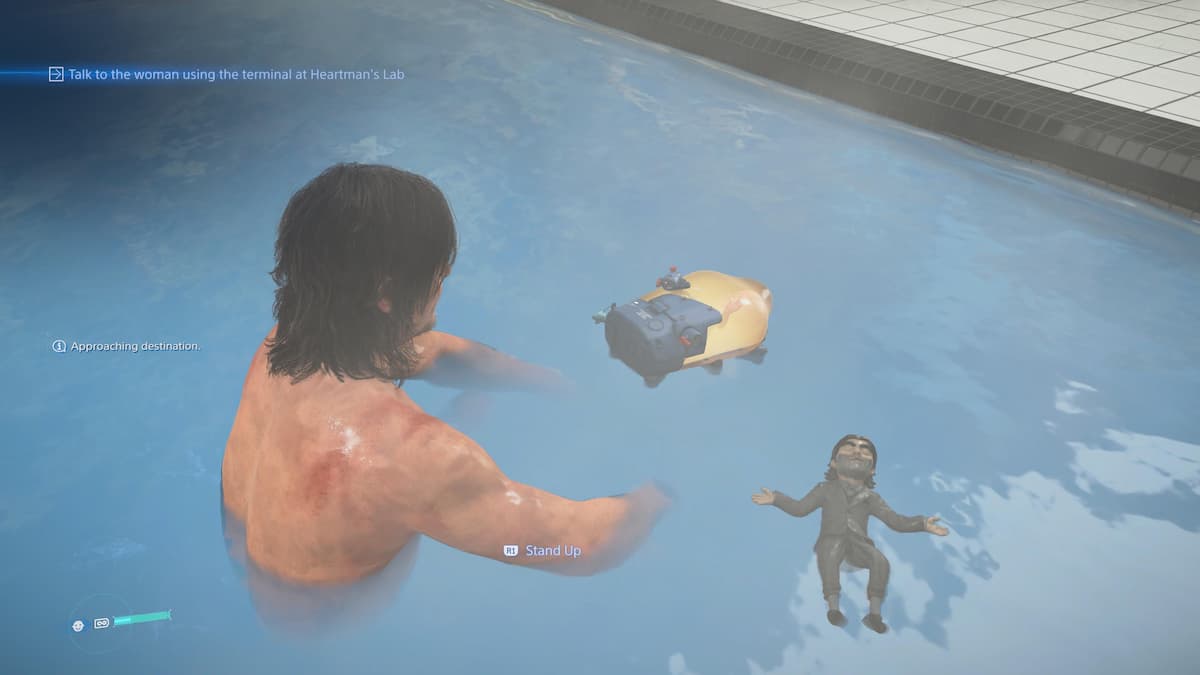
All these things come together to create a real sense of camaraderie among the DHV Magellan crew. Whereas Death Stranding could feel isolating (which was absolutely the point of that game), Death Stranding 2 goes in the opposite direction and it does so to great effect. Maybe it’s because I’m a sucker for classic RPG parties, but that’s exactly what the DHV Magellan crew feels like. A ragtag group of misfits and weirdos with strange quirks like going into cardiac arrest every 21 minutes, or literally making it rain whenever you step outside.
Death Stranding 2 does a remarkable job bringing the crew closer together with each main story chapter, culminating in an emotional crescendo that absolutely feels earned. As I entered the final act (before the story went off the rails), I was genuinely pumped to see the crew band together to beat the shit out of Higgs and link up Australia. I was internally cheering and fist-pumping each time Sam suffered a setback, only for one of my crewmates to step in with an incredible save.
Sam’s depression persists all throughout the story, and while there are moments of real sadness, it’s on the DHV Magellan where we get to see his moments of genuine joy as well. These moments will catch you by surprise, but they form the strong emotional core of Death Stranding’s story. Even if the story makes no sense and you can’t make head or tails of your ha and ka, all you need to know is that the DHV Magellan crew are a fun bunch that cares about each other, and that’s all you need to go on.
Still Making “Fetch” Happen
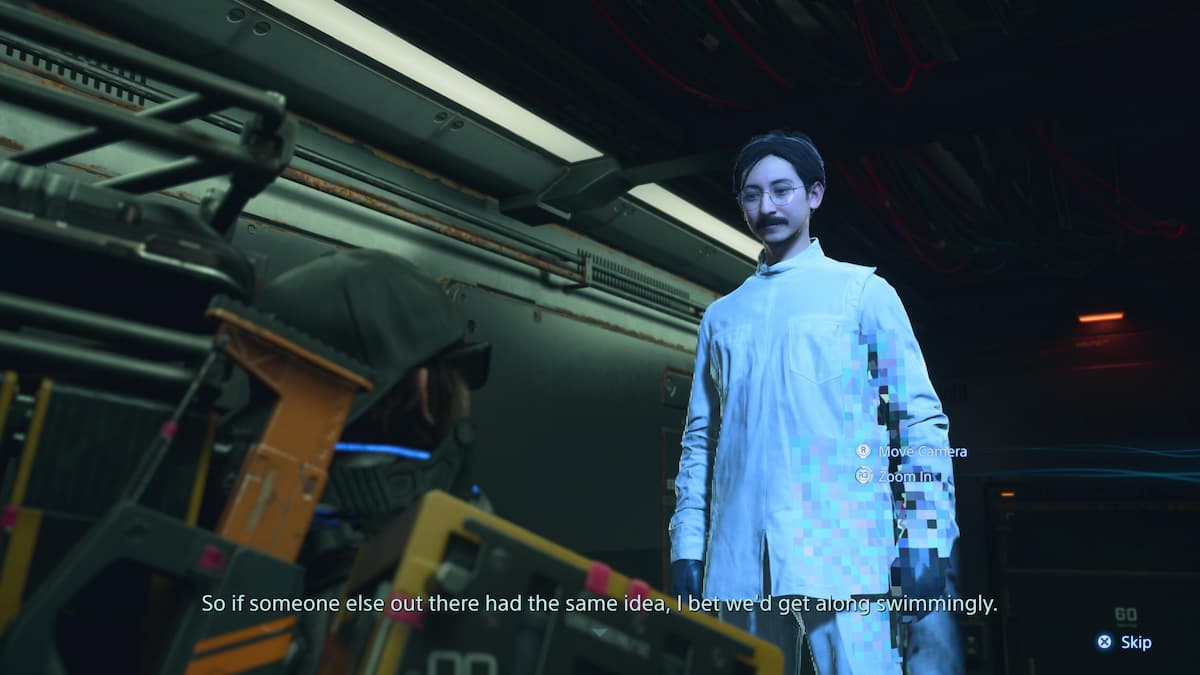
When I reviewed Death Stranding for Twinfinite, I joked that Hideo Kojima finally made “fetch” happen. I’m pleased to report, then, that Death Stranding 2 has taken on that mantle and has continued to make “fetch” happen.
Look, this isn’t a walking simulator, m’kay? This is a hiking simulator. This is a game about logistics. The things that made Death Stranding feel unique are still present here. You’re still figuring out how you’re going to be able to efficiently make your way across stretches of land filled with rivers, rocky terrain, and steep hills while carrying at least 50kg worth of cargo, and an additional 40kg worth of gear and tools. Like its predecessor, making deliveries in Death Stranding 2 requires careful planning while being ready for any surprises that might come your way along the route.
Death Stranding 2 is still able to inject you with a sense of terror whenever Sam trips over a tiny rock, loses his balance, and comes dangerously close to breaking all his cargo. It’s still good at making you feel like a total badass when you deliver a pizza — flat and within five minutes — while fending off ghosts and human brigands and precariously crossing a body of water while balancing on a narrow ladder. The moment-to-moment gameplay still feels excellent and if you’re willing to take your time with it and accept that Death Stranding 2 is very much a vibes game, then you’ll be right at home here.
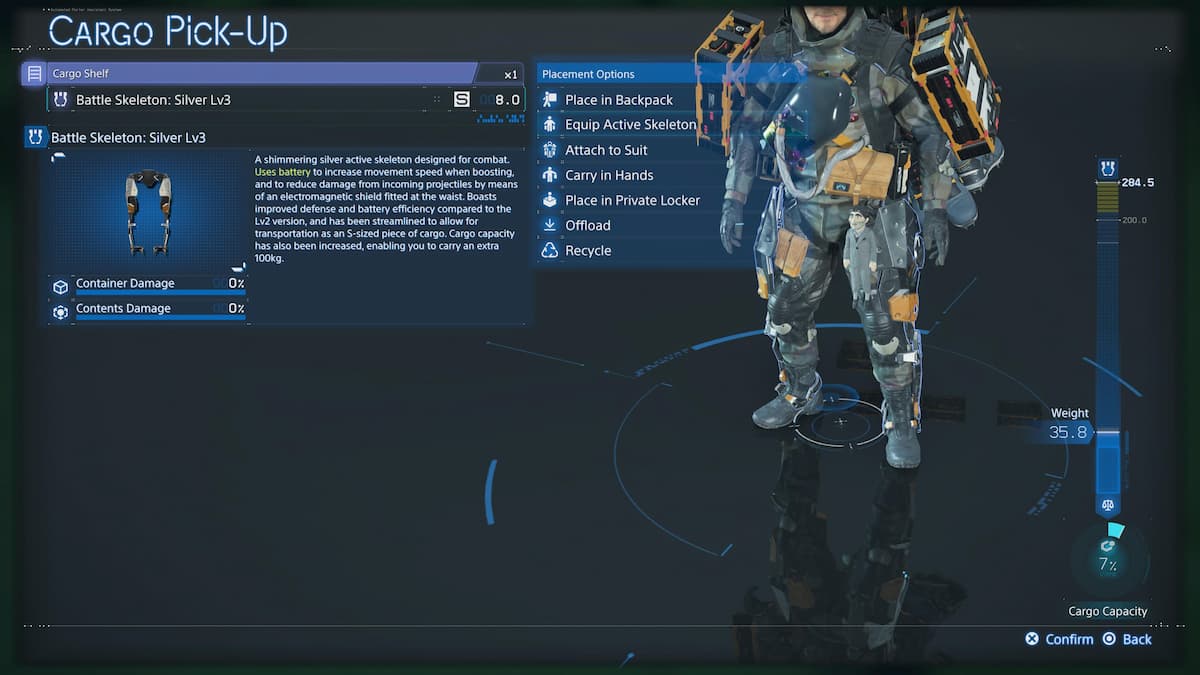
My favorite gameplay moments weren’t from the epic boss fights (more on those later) or my close encounters with the BTs. They came from driving cross-country in my little off-roader car loaded with cargo, as Chvrches blasted from my in-game music player. These drives could take up to 15 to 20 minutes per stretch, which is basically an eternity in video game world, but Death Stranding 2 is just so good at making you slow down to appreciate the quieter moments.
It bears mentioning that Death Stranding 2 is also a lot more accessible this time around. You don’t have to wait all that long before the game gives you access to vehicles, along with plenty of other fun toys that make traversal a lot easier. It’s probably a sign of just how much easier this game is when you can do about 98% of your deliveries in an off-roader or tri-cruiser. Diehard fans may balk at this, but for the purposes of onboarding new players and being more approachable, the game does its job.
BT Bosses
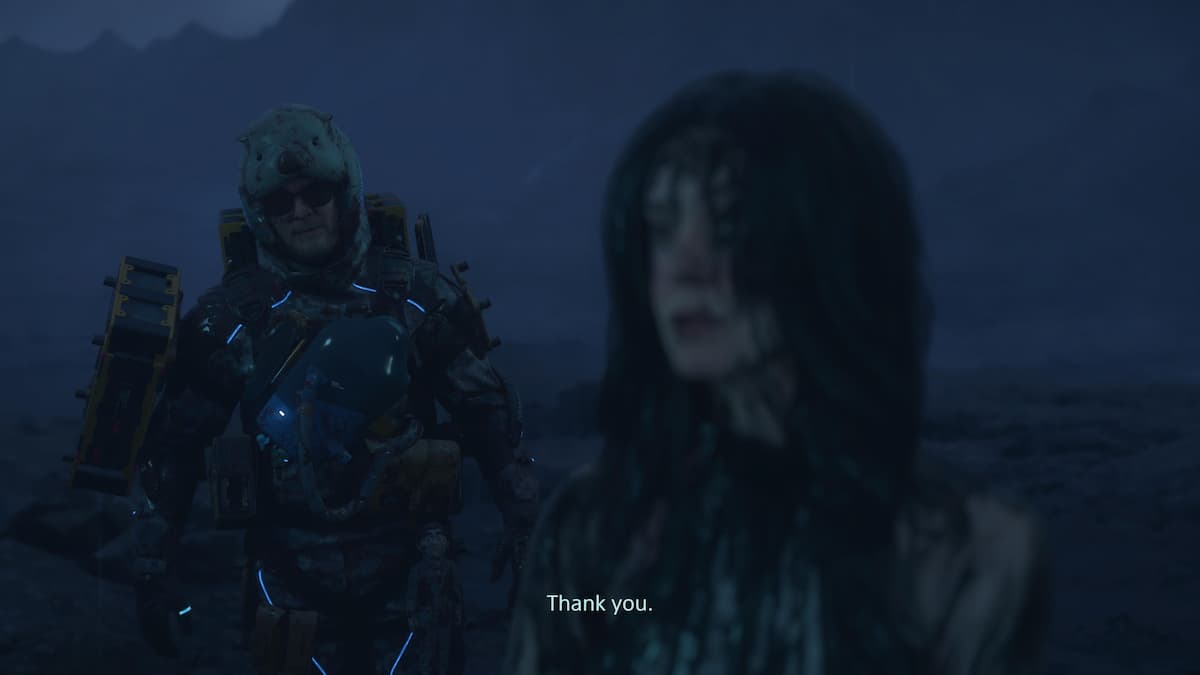
There’s also way more combat in Death Stranding 2, almost as if Kojima Productions heard the complaints levied at the first game and decided to do a full 180. Human enemies and bandit camps are a lot more common in this game, and you’ll also have a whole arsenal of weapons to deal with them.
The real highlight, however, are the boss fights. These are a huge step up from Death Stranding. Bosses are giant and terrifying, and they actually have mechanics, even if it usually just boils down to shooting the red spots on the enemy’s body until they get stunned. Still, they have a wide variety of moves and attacks and they’re actually dangerous, even on Normal difficulty. In true Kojima fashion, boss fights are always a grandiose affair, though the game makes sure to give you all the resources you need to clear them.
The regular combat encounters, however, leave a little to be desired. While stealth is touted as a viable play style in Death Stranding 2, it never actually felt feasible. You can’t go prone, for instance, and enemies always seemed to have superhuman hearing and awareness whenever I tried to sneak into their base camps. And the moment one of them spots you, the enemy hive mind activates and the entire camp converges on your location. Metal Gear, this ain’t.
Further, I also found that it was often easiest to just run and gun with no consequences. If I didn’t have to fight any enemies as part of a main Order, I could either Rambo my way through an enemy camp, or just drive past them and escape. The same goes for BTs, where I found I was usually able to escape easily just by driving away even if my off-roader got caught in tar. In my entire playthrough on Normal mode, I only died once, and it was in a boss fight with Neil, not in any of my encounters with the human enemies or the BTs.
Should We Have Connected?
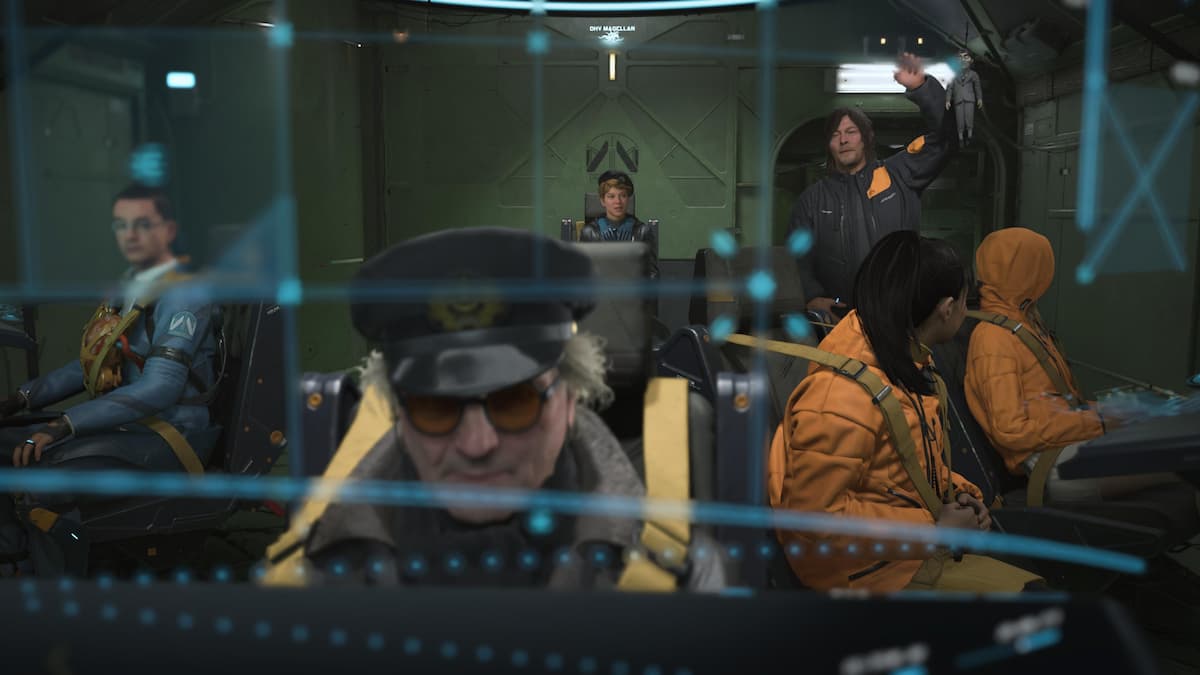
I’d be lying and doing a disservice to you if I said Death Stranding 2 was everything I wanted from a sequel to one of the most unique games I’d ever played. In almost every aspect, it is an upgrade. Despite the easier difficulty, I still found myself constantly surprised and in awe of the challenges the game was able to throw at me. It’s also the first game that truly feels like a PS5 game since the console’s launch.
From the blazingly fast load times to the impressive graphical fidelity and some late-game awesomeness that happens in real-time, Death Stranding 2 is hands down the most beautiful game I’ve played on the PS5.
The story department, as always, is where Kojima falls short. In his countless attempts to write and direct a film within the realm of video games — you can see it in the camera work and the fact that this game is riddled with celebrity appearances — Kojima has once again delivered a story that lacks any bite, or sense for that matter. He gets heartbreakingly close, closer than he’s ever gotten, but ultimately fails to stick the landing. That being said, what he lacks in finesse he more than makes up for with strong characters and beautifully directed vignettes and moments that endear you to the cast. And of course, the excellent gameplay, which does most of the heavy lifting.
I’m always grateful for the opportunity to play something so unique and so risky, especially in the mainstream video game space, that I’m almost willing to give Kojima a pass for his nonsensical writing, but I just can’t do that. Nevertheless, I’ll continue to follow his projects closely in the hopes that one day he’ll finally make a game that’s worthy of both his lofty ambitions and the need for good storytelling in this space. Keep on keeping on.
You can check out our review policy here. Reviewed on PS5.


